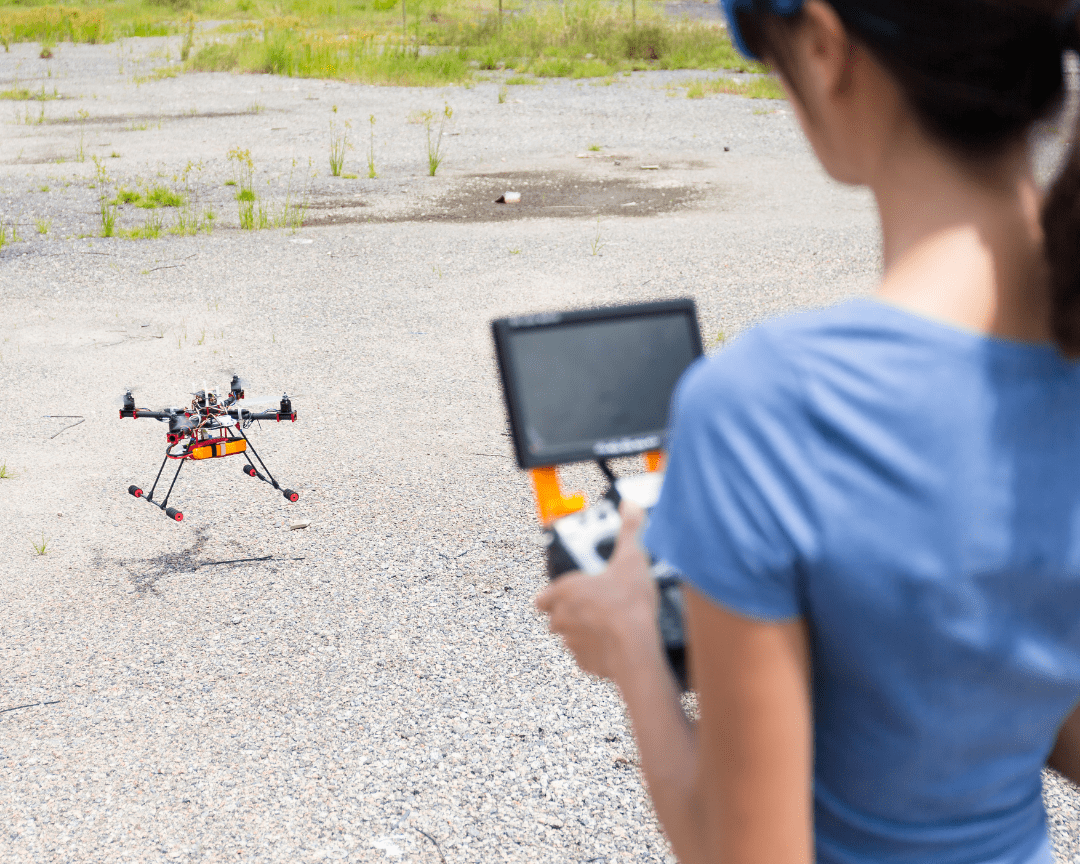Here at Drone Legends, we always want to stay informed about the latest, greatest developments on all things DRONES. If you’re looking to share the magic of drones with a child in your life, it’s a good idea to familiarize yourself with drone flying requirements before you take flight. The Recreational UAS Safety Test (TRUST) for drones is a knowledge and safety test that covers important rules and regulations for recreational drone pilots.
We’ll note here that the Drone Legends curriculum makes use of the Tello, which is a drone that’s so lightweight, you don’t need to be a certified drone pilot to use it. Teachers or parents looking to fly recreationally outside of our program with their own drones, however, may need to take and pass the TRUST test. If you’ve Googled around about “drones in the classroom” or “flying drones with kids,” you may have encountered this guideline and wondered what it was all about.
- What is TRUST? It’s a test for flying recreational drones.
- What does TRUST for drones entail? A simple knowledge-based test.
- Do I need to take the TRUST test to fly drones in my classroom? Probably not.
- Do I need to take the TRUST test to fly drones with kids? Probably not.
Read on for more detailed answers. ?
Defining “Recreational Flyer”
Drones come in different shapes and sizes, and they can be put to all kinds of amazing uses, from helping scientists record data to capturing breathtaking aerial photography. Of course, we love using drones to teach STEM skills in the classroom, but they’re also just plain fun.
Recreational flyers refers to people who operate their drones for personal enjoyment rather than using them for commercial work or in situations where any kind of compensation is involved — even in the form of goodwill. This applies to scenarios like volunteering to collect drone footage for an organization, etc.
Flying Drones for Educational Purposes (Recreational Rules)
While Part 107 is the primary law for those operating drones that weigh under 0.55 lbs, there is a special exemption for research and educational purposes that allows educators to operate under the rules for recreational flyers instead.
What is the TRUST Test?
TRUST aims to educate budding drone pilots on drone safety, rules, and regulations — and then of course, to test them on their newly acquired knowledge. When recreational drone flyers pass the test, they earn a TRUST completion certificate as proof of all that aeronautical know-how. Drone pilots must be able to show their certificate to the FAA or to law enforcement upon request.
In addition to passing TRUST, a recreational drone pilot must register their drone if its weight exceeds 0.55 lbs (most classroom drones DO NOT). It’s also important to follow the drone safety guidelines listed on the FAA website or the rules of an FAA-recognized community based organization.
How Do You Take the TRUST Test for Drones?
The TRUST test is completely free and can be taken online through an approved testing agency or organization. You can find a list of approved TRUST test administrators here.
What’s on the TRUST Drone Test?
The TRUST test is divided into two sections. The first section provides educational content, including all the information you need to pass the test. The second section consists of multiple choice questions.
The good news? You can’t fail the TRUST test. If you flub a question, you’ll receive an explanation of why your answer was incorrect, then you’ll be prompted to try again.
Safely Fly Drones With Kids
Whether you’re a parent, educator, or caregiver looking to get in on the fun, flying drones with kids requires patience, clear communication, and simple safety measures to protect everyone involved. The reward is a fun, memorable learning experience.
If you got to this article because you wondered whether you have to take the TRUST test to use drones in your school or home, we’d say: look at the drone you want to use and read the UAS site page. If you meet the criteria for requirements: take it. We won’t make any assumptions or guide you specifically, because we don’t know your exact situation.
What we will say is this – drone safety is important and you should have a plan in place before flying drones with kids.
Here are a few basic drone safety tips to get you started:
- Provide Ample Instruction — Ensure that kids are given clear, comprehensive instructions before flying drones, and demonstrate steps whenever possible
- Wear Eye Protection — Safety goggles are a great way to keep everyone safe
- Have Clear Rules in Place — Establish clear rules on what is and is not allowed during a drone flight. This includes rules for the drone pilot and any bystanders
- Use Verbal Warnings — Calm, clear and timely verbal warnings can help keep a drone flight safe and fun
- Use Lightweight Drones — Lightweight drones like the Tello provide a safe way for kids to enjoy the magic of drones both indoors and outside
- Maintain Line of Sight — As a flight supervisor, always keep a drone and its flightpath within your line of sight so that you can monitor and provide verbal warnings when necessary
- Practice in an Open Area — Practice flying drones in an open area, such as an empty field, before taking on a more challenging flightpath
- Establish Boundaries — Before you begin, it’s a good idea to establish flightpath boundaries that keep your drone within range and within view
To learn more about drone safety in education, check out our blog post: Are Drones in the Classroom Safe?
Safe Flight: Drones & Learning
Drones are an amazing tool that can help teach kids valuable STEM skills, all while keeping them safe, engaged, and making memories they’ll cherish forever. That’s exactly why we decided to bring the magic of drones into classrooms, summer camps, and afterschool programs across the world.
Our drone-based curriculum incorporates a range of STEM concepts into fun, immersive drone missions. Any teacher or volunteer can easily take all of our resources to make stellar drone lesson plans.
In our world, students work together to solve complicated problems that researchers and scientists face in the real world today. As a result, kids learn about physics, practice their math skills, get hands-on with building and engineering, and upskill in coding as they progress through each lesson.
Our standards-aligned curriculum encourages teamwork, clear communication, problem-solving, and critical thinking as students learn all about STEM career fields and important real-world drone applications.
Do You Need Certification to Use Drone Legends?
While getting certified opens up new possibilities for recreational flyers, you do not need TRUST certification to enjoy our program. The Drone Legends curriculum uses the Tello — a lightweight yet durable drone with excellent safety features. Tello drones are so light, you don’t need to be a certified drone pilot to use them, though drone pilots should still follow all applicable safety protocols.
If you’re curious about drones or have questions about the Drone Legends curriculum, connect with us online to learn more.
You can also follow us on Twitter and Instagram to keep up with what’s new!




